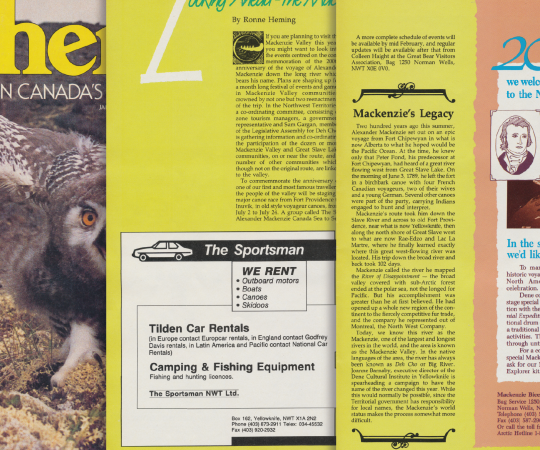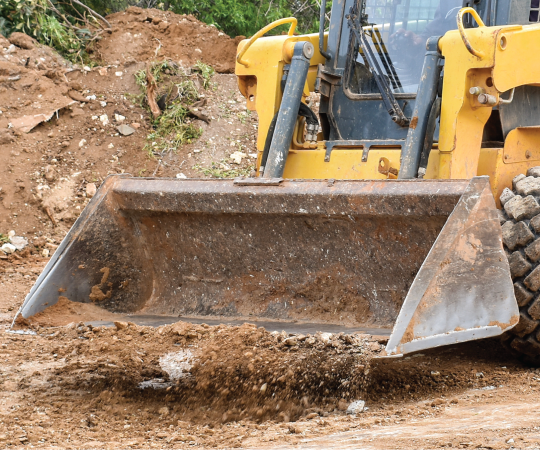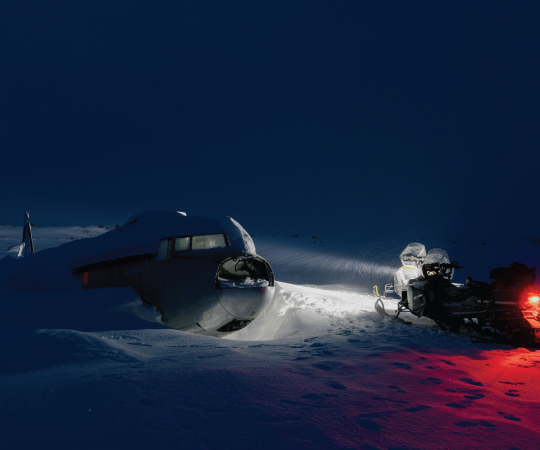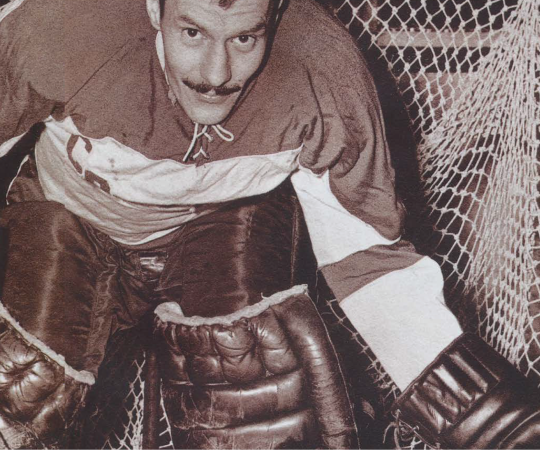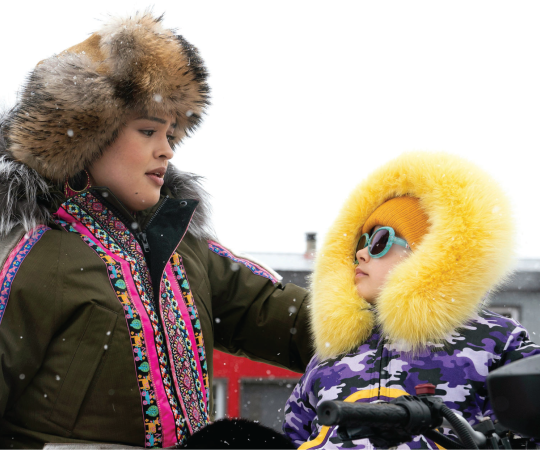A rainbow of raincoats flashing between the spruce was a hint that something was amiss. It was a rainy late afternoon on the Yukon’s Canol Road and I was the tail guide on a 10-day cycle tour through the Yukon backcountry. By this point in the day, my clients should have all reached our camp, 10 kilometers down the road, and be warming up with biscuits and a cup of tea.
This was my third time guiding a cycle tour in the territory. On previous trips, I’d been cooped up in the support truck while one of my co-guides rode behind the group with a satellite phone and a first aid kit to help straggling clients. Now, that was my job. I rode at the back while my co-guide, Fabrice, drove ahead in the truck to set up camp before the cyclists arrived. As the most experienced guide on the trip, I was ultimately responsible for the group’s safety.
It had been a quiet week. We’d been mostly alone, having seen fewer than 10 other travellers. There was a Swiss couple living in a tiny cabin nestled in the mountains between Ross River and Johnson’s Crossing. We met two families from Ross River heading out to their camps. There was a roaming Alaskan who lived in the leaky bed of his Ford Ranger and talked ceaselessly about his rifle. And two Vancouverites on their dream road trip in a rickety van that smelled like weed.
‘Maybe, there’s another group of cyclists on this remote road,’ I thought, projecting optimism. I was wrong.
Cresting the hill, I saw our support truck—a Ford Econoline 4x4 from the late 70s—hanging between the road’s gravel embankment and two black spruce. Below it, the hillside dropped 30 feet into a dark, grey lake. Mist trickled through the smashed windshield. A German all-terrain camper was tied to our truck’s hitch.
The group huddled on the edge of the road, looking at me from beneath their dripping hoods. Their eyes seemed to be begging me for a plan.
Fabrice wiped his glasses on his dirty shirt, inadvertently smearing them with mud, and looked forlornly at the van. The German, tousled hair peeping from his cap and a hand-rolled cigarette hanging from his mouth, stood beside him. They were debating how best to pull the van back on the road.
“What happened?” I asked.
“A moose,” said Fabrice. It had wandered onto the road as he crested the hill. Swerving slightly as he put on the brakes, the van’s front wheels got caught in gravel on the edge of the road. It was soft and yielded under the truck’s weight, sending it slowly off the embankment until the trees caught it, preventing it from rolling into the lake. Fabrice, unhurt, climbed out the window and onto firm ground while the truck hung in the branches.
Alone, more than 80 kilometres from the nearest community and without a satellite phone, he could only wait. That’s when the German appeared in his 4x4 camper.
“‘To be a guide, you need to be a bricoleur,’ Fabrice had told me...Someone who can build or fix things on the fly, with few resources. You’re part DIY expert and part artist, creatively adapting to whatever situation you find yourself in.”
The cyclists started to roll in as Fabrice and the German tried to pull our truck back onto the road, using the camper as a tow truck. First was a couple, both retired paddle guides from Ontario. Next was an Australian ship mechanic who split his time between sailing the Pacific and shearing sheep in New Zealand. A German long-distance cyclist followed, accompanied by a 30-year-old lawyer from Toronto who had never ridden on a gravel road before this trip.
Everybody had been in the rain for hours by the time I arrived. Buzzing with adrenaline, Fabrice hadn’t even noticed he was wet until I convinced him to stop trying to coax the van back onto the road, and accept it wouldn’t move any further. The others hunched miserably in their raincoats. They were silent except for the odd snappy comment.
We needed to eat and warm up.
Quickly.
“To be a guide, you need to be a bricoleur,” Fabrice had told me earlier that week. A bricoleur is someone who can build or fix things on the fly, with few resources. You’re part DIY expert and part artist, creatively adapting to whatever situation you find yourself in.
Bad things happen on trips, and it’s impossible to predict them. These complications are often mundane: a bike breaks down, slowing the group enough that we get into camp too late for happy-hour drinks. But sometimes they’re not—like when your support truck almost rolls down a 30-foot embankment. That element of the unknown is what keeps the job fun.
All you can do is prepare. You spend countless hours pushing your comfort level in the outdoors and developing skills that help later when leading groups.
It’s been a lifelong education. Most of my free time is spent outside running, hiking, kayaking, skiing, and sailing. Growing up, this helped me learn how to live comfortably outside for weeks at a time. Courses in river rescue, risk management, and wilderness first aid bolstered skills I picked up indirectly through experience. The search for a summer job that would let me be outside led me to the guiding industry. Eventually, I found myself in the Yukon.
Those years of preparation crystallize into the rituals that lead up to a trip—the days spent packing food in the company’s larder; nights testing portable stoves and watching their pilot flames flicker in the midnight sun. It’s almost a meditation when I pack gear into a 3-D jigsaw puzzle that can be quickly taken apart to set up camp each night.
“Everybody on the trip is out of their comfort zone, except for you,” Stefi Van Wijk tells me. She’s a friend and longtime guide who led Black Feather canoe trips in the Nahanni. That’s definitely true in theory. But I’ve found it only partially so in practice. Each trip has its own particularities and unpredictable changes that force guides to be flexible. That’s especially true in the North, where most trips run over several days in areas with spotty transportation or telecommunications networks.
Sarah McNair-Landry, an Iqaluit-based polar expedition leader, is no stranger to the endless adaptation required on Northern trips. She’s crossed Greenland five times, circumnavigated Baffin Island by dogsled, and runs Northwinds Expeditions, a business guiding others to remote places across the Arctic.
“The comment I get the most is, ‘You’re so lucky, you get to be outside all the time.’ The reality is that I often work seven days a week, I work late, and when I’m out in the field with clients, it’s 24-7. You’re on all the time. You have to love it to make it work.”
The tension between non-stop work and the freedom of being outside in the North can be both exhilarating and exhausting. But without this job, I’d have never opened my tent fly early one morning in the Richardson Mountains to be greeted by an inquisitive Arctic wolf. Nor would I have developed a broad (if superficial) knowledge of the Yukon’s landscape that would have been impossible working in a single community, or visiting for a week or two. I’ve made lifelong friends, amassed a catalogue of stories to tell around a campfire. And the work has funded my plane tickets North. Plus, there’s no better feeling than the first shower that washes the dust and stress away after a trip.
Still, you’re never ready for everything.
Surveying the automobile accident on a rainy day in the Yukon backcountry, I realized it was time to be creative.
Thankfully, no one was injured and no one was hypothermic. The group hadn’t started arguing so I still held out hope that I could spin this into a decent afternoon. We hauled all of our camping gear from the truck and I set up a tarp under which everyone could enjoy tea and snacks while I called the company headquarters with the satellite phone to arrange a pick-up.
Twenty minutes later, we’d set up camp alongside the road and the kettle was whistling. We laughed over bowls of soup, shortbread, and chocolate as the German recounted his adventures on the shoddy road. Fabrice had bundled himself in long underwear and a puffy yellow coat. Warm and safe for the first time in hours, he started to realize his luck: had the truck missed the trees, he might be in the lake right now.
The rain eased later that evening. Sunlight flooded the muddy road, transforming it into a tapestry of glittering streams weaving their way down the hill. Across the lake, ochre mountainsides peeked between the clouds while the sweet smell of damp blueberries mingled with the tang of black spruce. Everyone was safe and happy.
“It’s those super simple moments,” says McNair-Landry, describing the best part of the job. “That really beautiful sunset, the break in the clouds after a huge storm, the hot chocolate at the end of a hard day.”
I couldn’t agree more.



